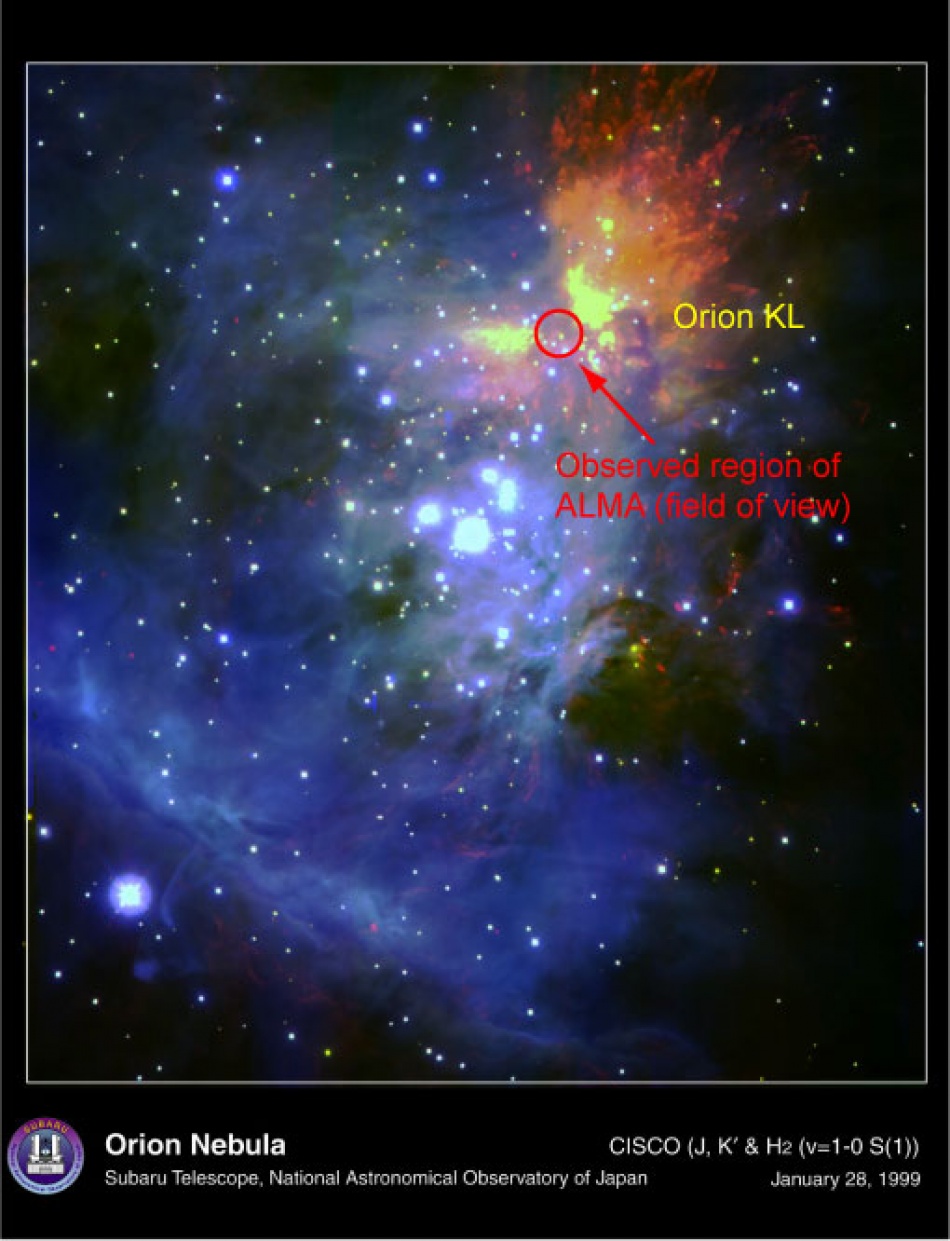Background
Thanks to recent intensive studies, the formation process of low to intermediate mass stars is now well understood. On the other hand, we know little about how massive stars form. Low and intermediate mass stars are formed by mass accretion from a circumstellar disk. Is this process the same for massive stars? Massive stars could form via stellar collisions as another theory suggests. We cannot answer such a simple question.
A radio telescope is essential to study the process of star formation because stars form in gas and dust, and a radio telescope observes such interstellar matter. For high resolution, observations by a radio array have a great advantage. Until very recently, the resolution and sensitivity of observational instruments were not high enough for detailed investigations of molecular clouds in which massive stars are forming. To make matters worse, most such clouds are located far from our Solar System. Now, ALMA enables researchers to study actual formation sites of massive stars.
